Hand coloured history of Hastings
This article contains affiliate links. We may earn a small commission on items purchased through this article, but that does not affect our editorial judgement.
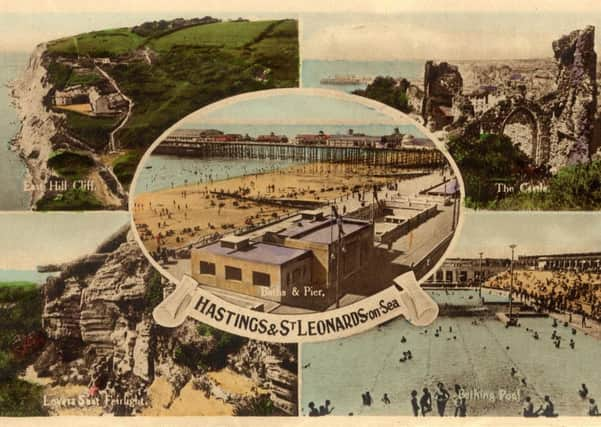

We have seen that in the early part of the 20th Century illustrated guides were gradually overtaken by postcards and the two shared much common ground because not all postcards were actually sent.
Many, as today, were kept as souvenirs particularly before personal cameras became more commonplace, and there was a market for packets of postcards too, or, strips of views not intended to be sent individually and that is what we have here.
Advertisement
Hide AdAdvertisement
Hide AdIt was produced in the late 1930’s in ‘Leporello’ or concertina format with a set of six postcard-sized images printed vertically on standard-grade paper, and contained in a card folder with a tuck-in flap.
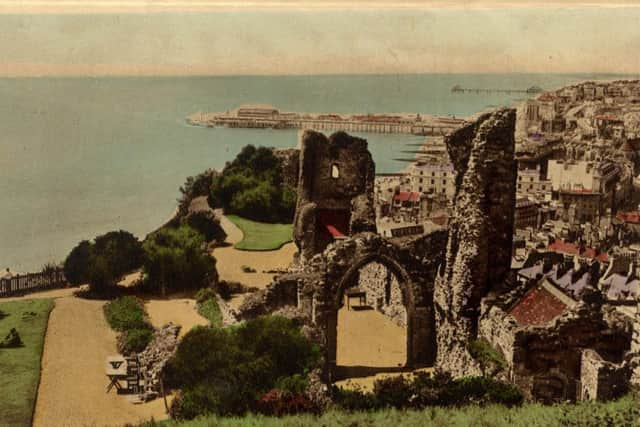

This was so that post office regulations could be adhered to – as noted on the address panel “If Senders Signature is written and Flap Tucked in ½d Stamp is required. If Message is written and the Gummed Flap Sealed Letter Postage 1½d is charged’. In this case the flap wasn’t gummed! And remember that in pre-decimal days there were 240d (pennies) to the pound.
This set could also have been uncoloured in sepia, and of course the individual pictures were also available as postcards, originally in high-quality photographic images but later, as in this set, produced with the much cheaper photogravure process. It appears that the images were individually coloured by hand, usually by women often as ‘home-workers’ on piecework.
The publisher is not credited but the logo leads us to Shoesmith & Etheridges ‘Norman Series’ who produced postcards covering the south-east of the country - Albert George Barrett Shoesmith was born in 1876, in St Leonards and In 1905 Shoesmith was a “shopkeeper” working on his own account at 17 Stone Street.
Advertisement
Hide AdAdvertisement
Hide AdBy 1908 it was recorded that he was Manager of the Sussex Post Card Co. and in 1910 he is described as a “post card publisher”. Four years later, in 1914 Directories he’s listed as the proprietor of the Sussex Photographic Co. and had been publishing real photographic cards under his own name since 1909 as well as using other trading names such as Palacette Studio, Post Card Co, Sussex Photographic Co, Sussex Seaside Series or Sussex Budget Lettercard etc.
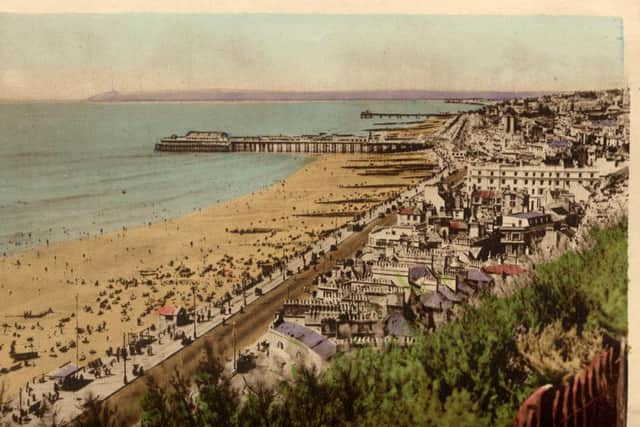

More confusingly, some of his publications were not credited at all. Albert Shoesmith and his family lived at 4 Earl Street until at least 1915, but by the early 1920s he’s listed at 154 Queens Road, which was for many years as his business headquarters as well as his home.
He was later to acquire No 153 next door. It was in 1915 that he decided to enter into a partnership with George Etheridge to sell cards jointly under the ‘Shoesmith and Etheridge’name and Shoesmith appears to have stopped publishing cards on his own. In the 1930’s the firm was recorded as ‘wholesale stationers’.
Postcard production ended around 1966 when the Maidstone firm of D. V. Bennett purchased the negatives and the remaining stock of postcards. Albert Shoesmith died at St Leonards in 1957, aged 81. and Shoesmith and Etheridge are still in business, although no longer publishing cards, and are now based in Uckfield. They produce stationery, wrapping paper and other items. In 1992 the firm was acquired by Johnston Press plc, owners of the Hastings and St.Leonards Observer.
Advertisement
Hide AdAdvertisement
Hide AdAll illustrations throughout this series are from Ion Castro’s own collection and he can make available copies of some of the historic images used in this series. There’s more local history on Ion’s website, www.historichastings.co.uk.
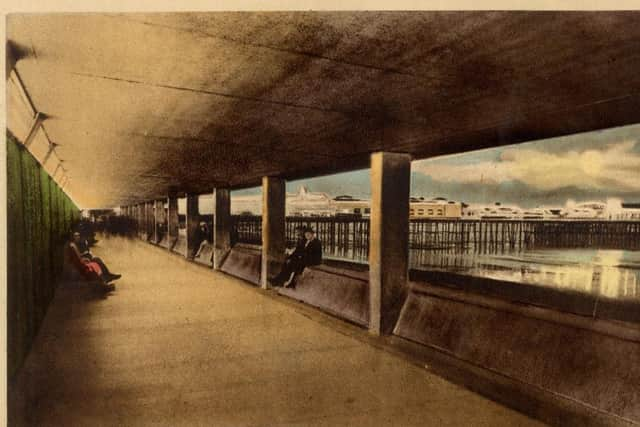

Captions
Birdseye view of Hastings & St Leonards
Both Piers can be seen and Sidney Little’s promenade in front of Robertson Terrace is in use.
Hastings & St Leonards Bathing Pool
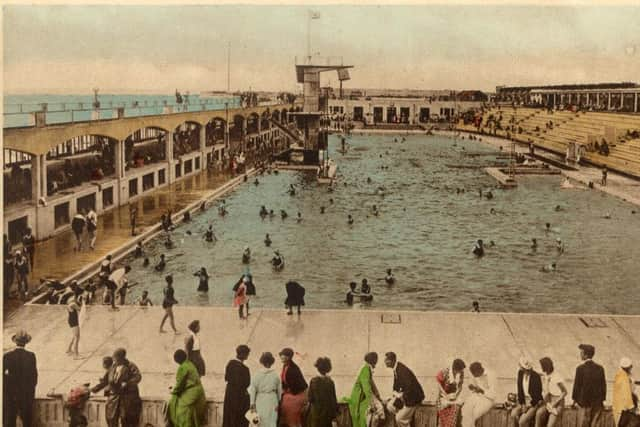

The pool, opened in 1933, but wasn’t financially viable, and it had closed by 1959. It reopened the following year as a down-market holiday camp and finally closed in 1986 to be demolished in May 1993. The site is now partially occupied by an underground storm-water storage tank and the rest of the site is still vacant.
Multiview
A common way of incorporating several images into a single postcard, individual, standard, postcards of each of the views would also have been available. In pride of place is the newly opened Swimming Baths
Advertisement
Hide AdAdvertisement
Hide AdHastings & St Leonards New Covered Promenade & Pier at Night
Pictured not long after ‘Bottle Alley’ was completed. The whole length was originally illuminated with continuous strip-lighting seen here on the upper left of the picture, as time went by this was reduced, presumably for economy reasons, to every other or every third panel giving this unique thoroughfare a dingy and unappealing appearance at night and there are now plans to restore this continuous lighting.
General View from Pier Head, Hastings
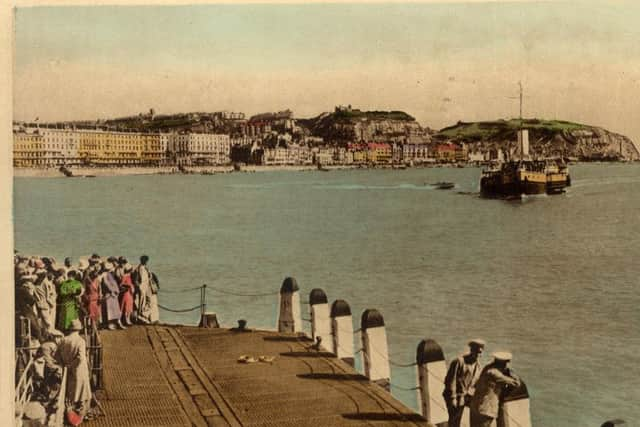

The paddle steamer would have been operated by P&A Campbell and offered trips along the coast and to Boulogne, a service survived until the early 1960’s. The landing stage has gone but the eroded wooden piles that supported it can still be seen today.
Hastings Castle
No set of images of the town would have been complete without Hastings Castle, still dominating the townscape as it has done for nearly a thousand years. Both piers can be seen in the background.
Advertisement
Hide AdAdvertisement
Hide AdDon’t miss out on all the latest breaking news where you live.
Here are four ways you can be sure you’ll be amongst the first to know what’s going on.
1 Make our website your homepage at www.hastingsobserver.co.uk
2 Like our Facebook page at www.facebook.com/hastingsobserver
3 Follow us on Twitter @HastingsObs
Advertisement
Hide AdAdvertisement
Hide Ad4 Register with us by clicking on ‘sign in’ (top right corner). You can then receive our daily newsletter AND add your point of view to stories that you read here.
And do share with your family and friends - so they don’t miss out!
The Hastings Observer - always the first with your local news.
Be part of it.